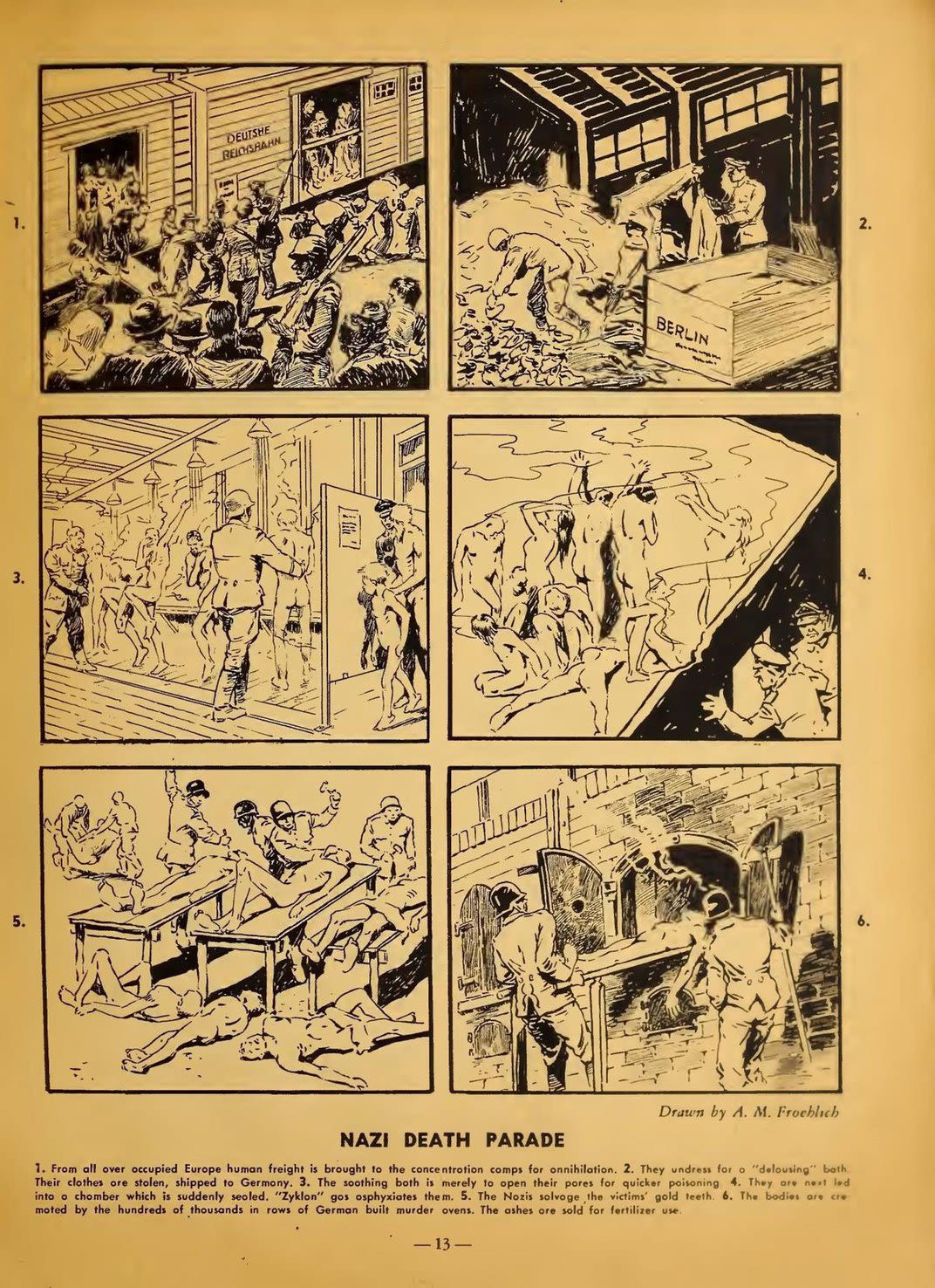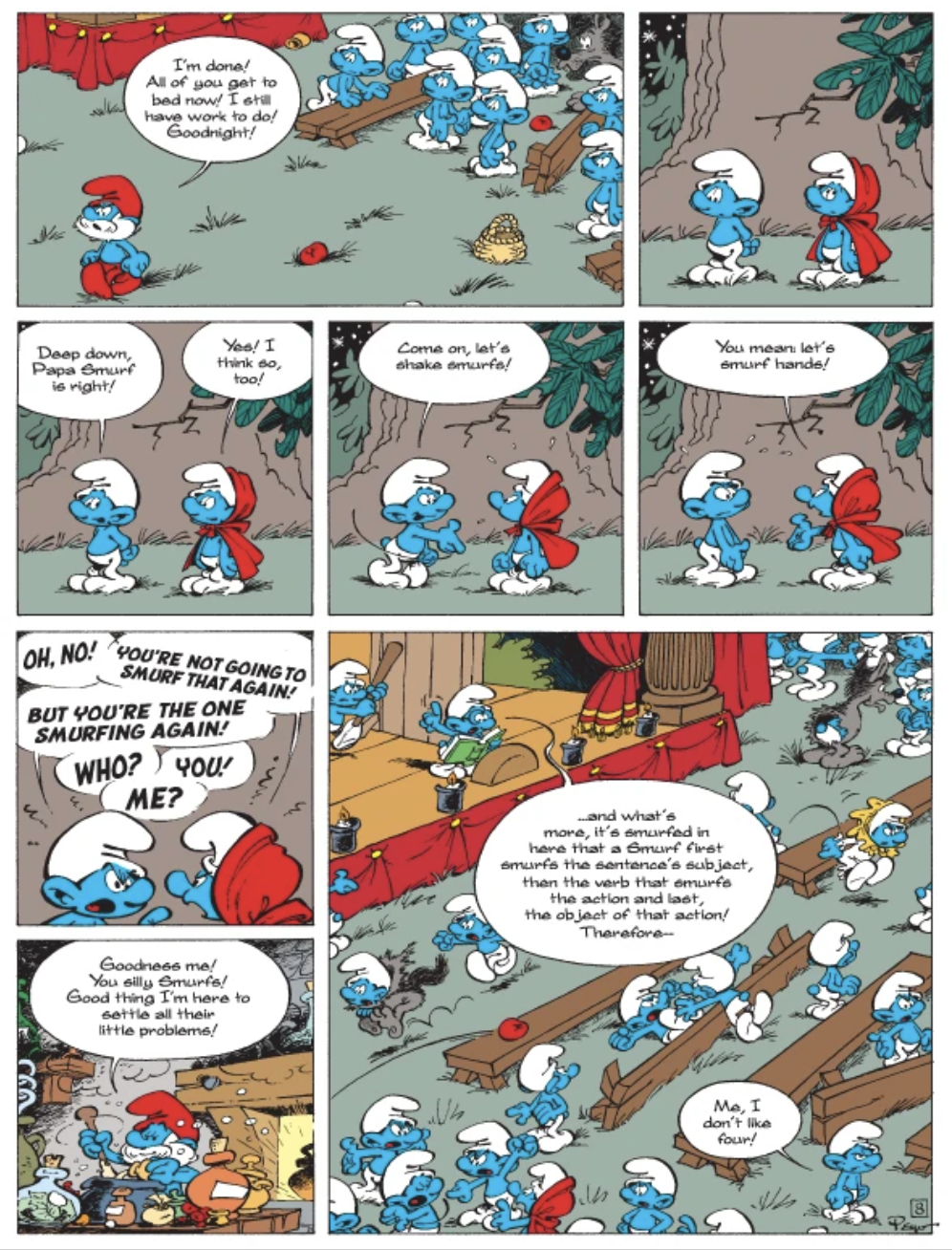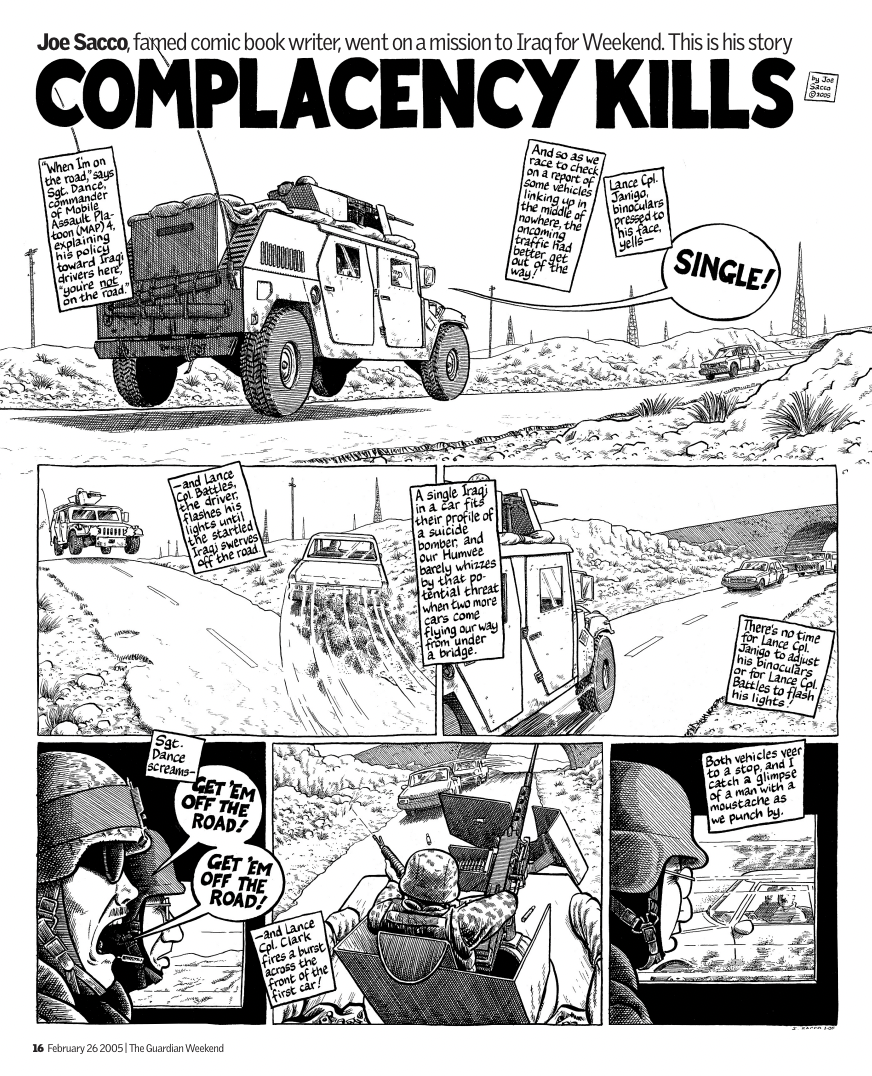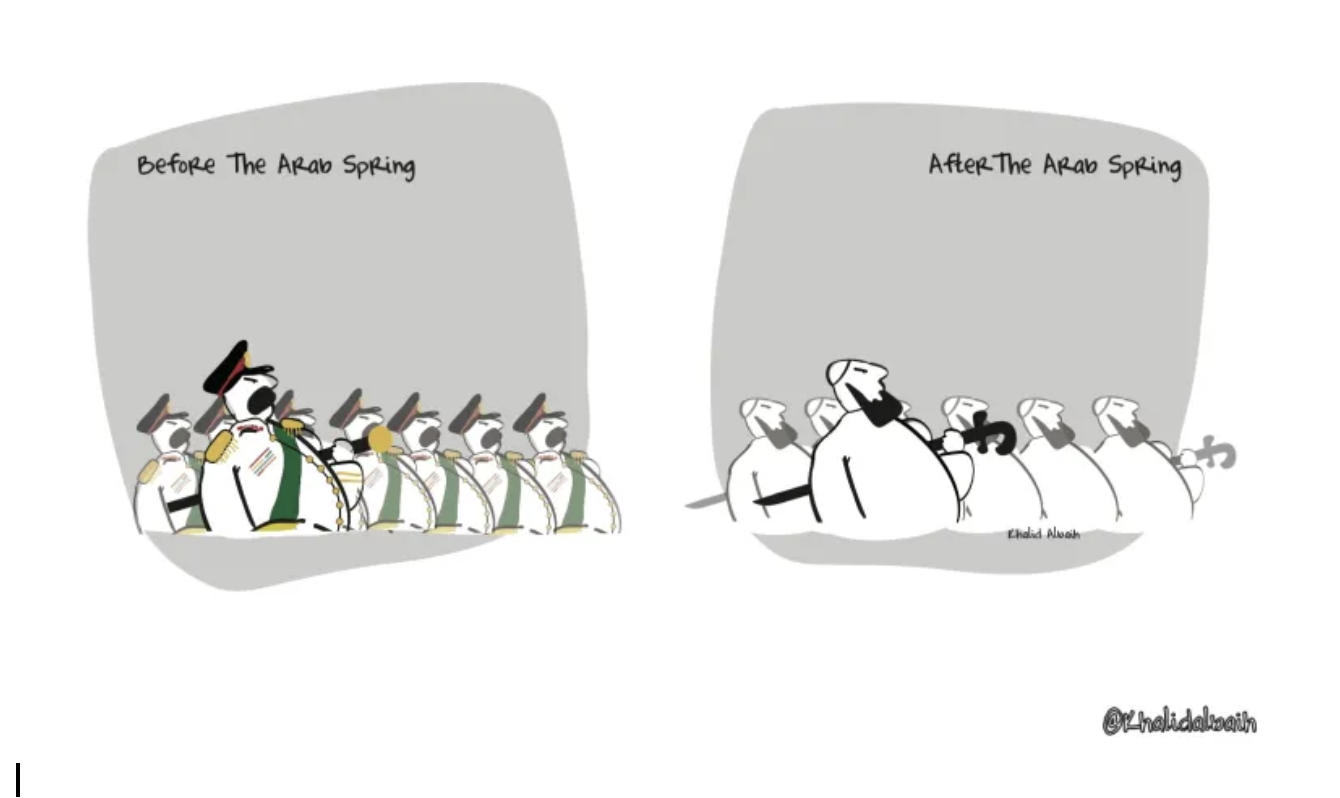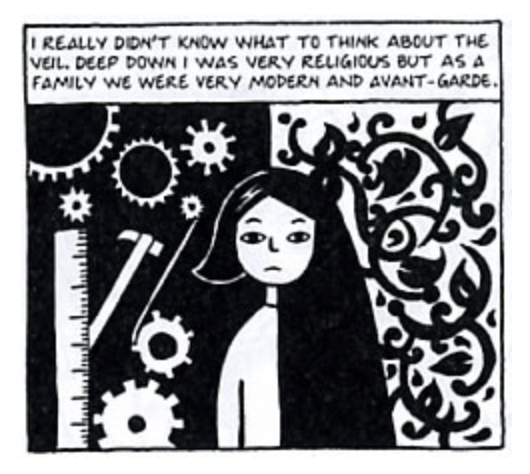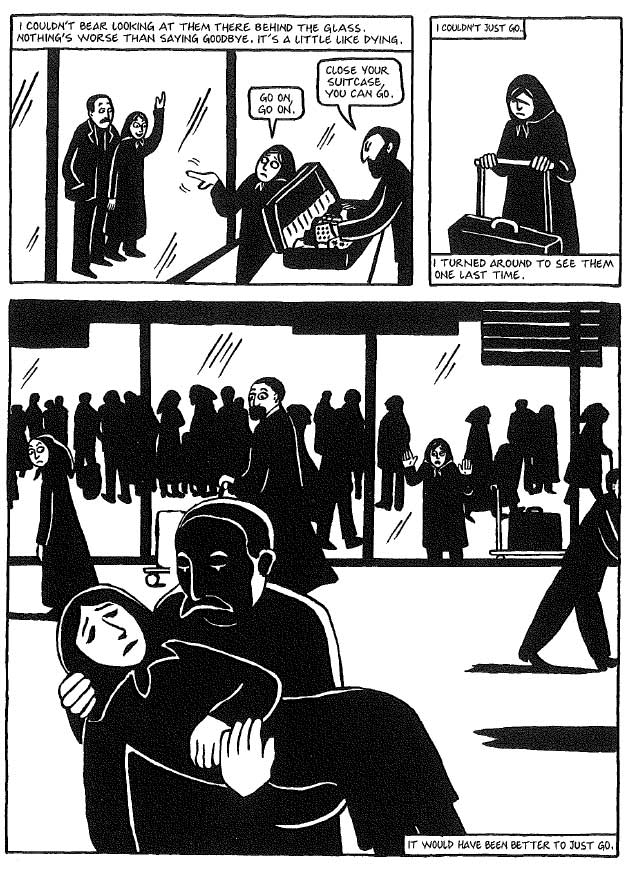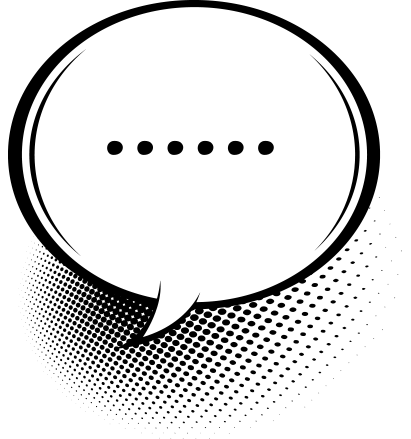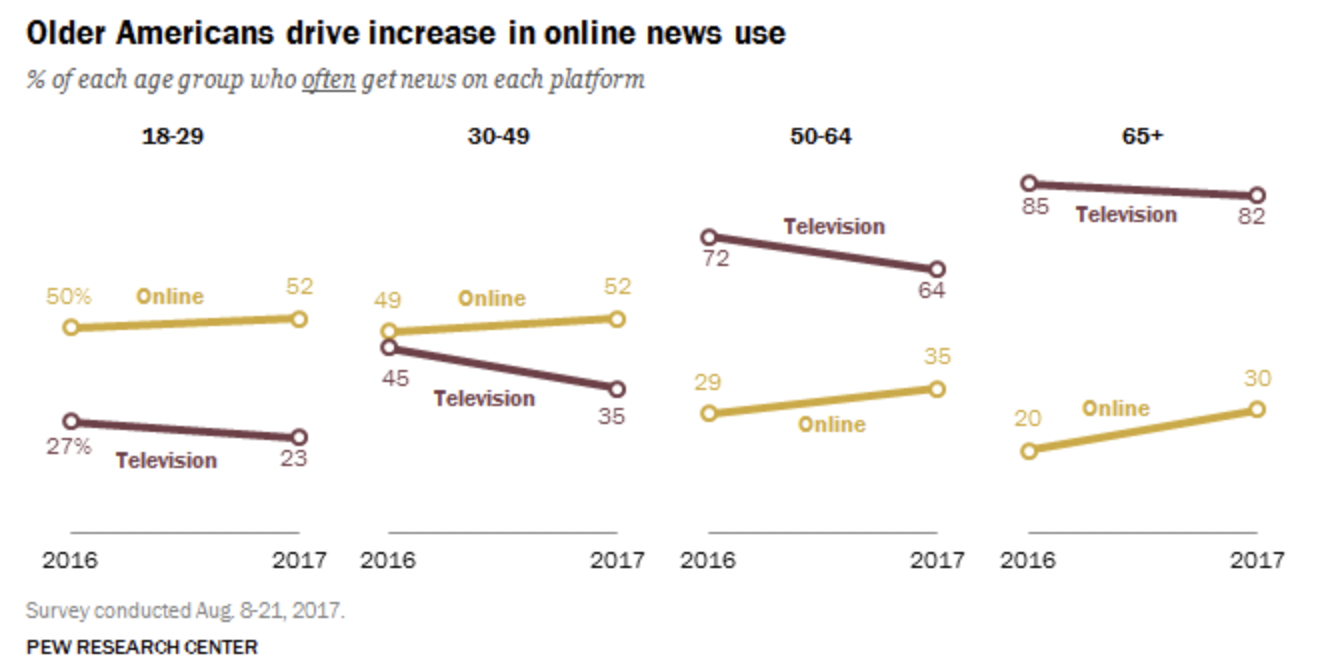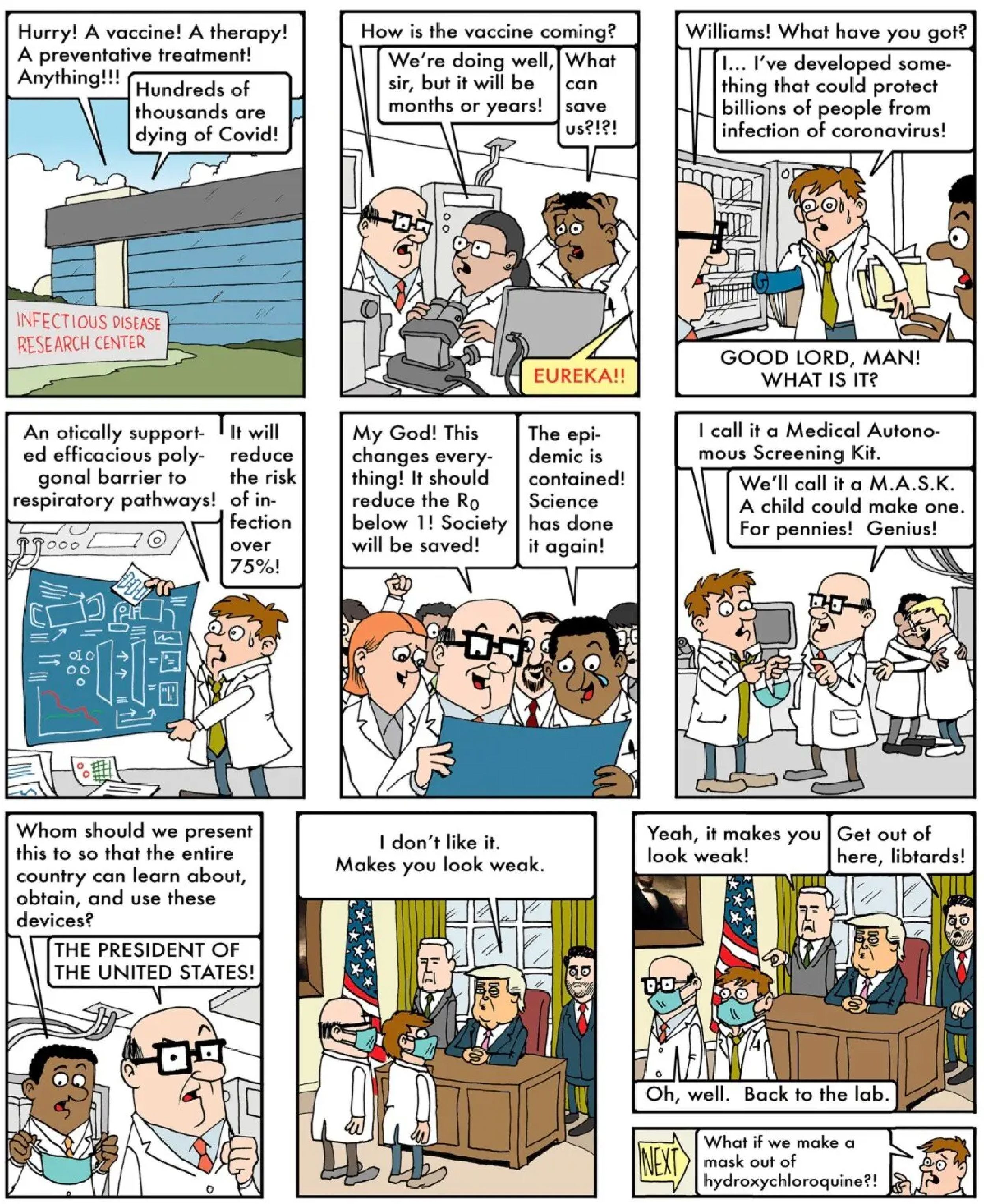The role of comics journalism in
modern media
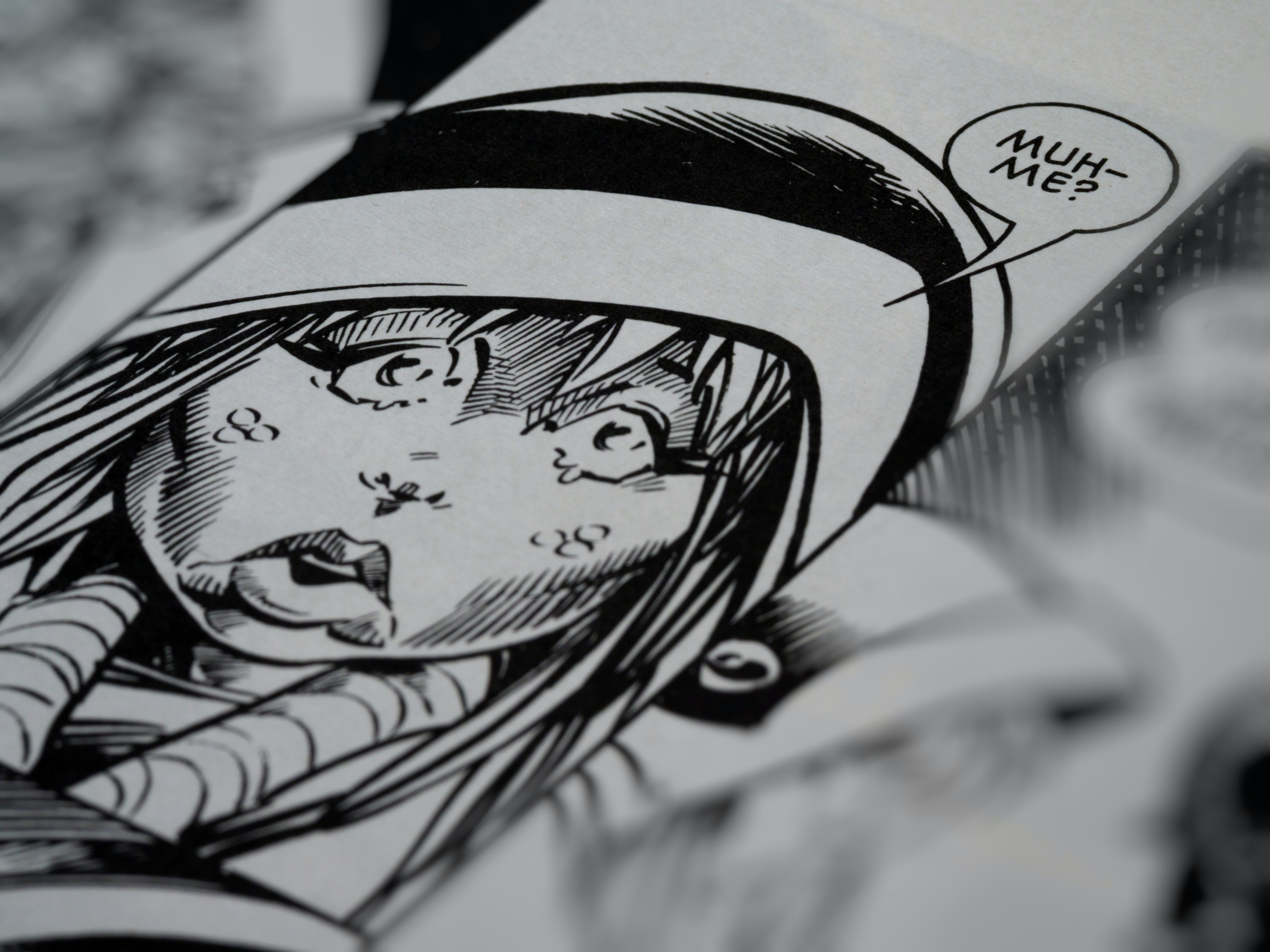
By Kimberlee Meier — Contributing Writer
When you picture a traditional journalist, what do you see?
Most people will would imagine a newsreader with a microphone in front of a camera, or a journalist writing down notes inside a courtroom. Yet some of the most impactful journalists in history have neither microphone nor camera. They’ve had a pen, paper — and a comic strip.
Comic journalism is a unique, yet underrated medium, where complex political and social issues have been discussed for decades. From the Holocaust to the Iraq War, comic journalists have used a combination of words and illustrations to report on historical news stories, challenging the reader's concept of reality and offering a different perspective on an event.
This article will look at how comics journalism has shaped the industry, and what its place is in modern media.
Let’s dive in.
What do the BBC, Tripadvisor, and Penguin have in common?
They craft stunning, interactive web content with Shorthand. And so can you! Publish your first story — no code or web design skills required.
Sign up now.

What is comics journalism?
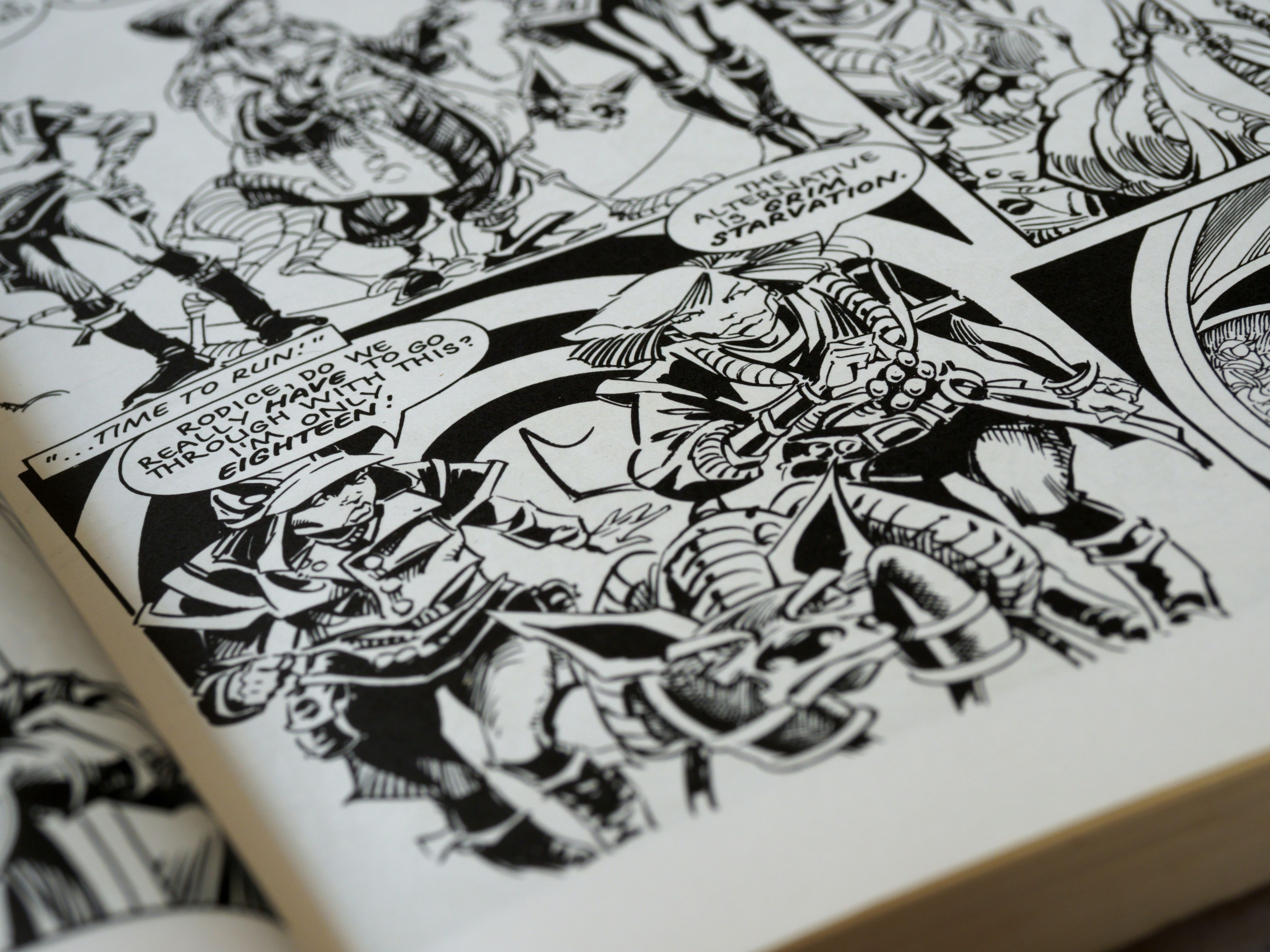
Comics journalism is when comics and illustrations are used to report news, current events, and complex, long-form subjects.
Comics journalism — sometimes called graphic journalism — usually mixes visual elements and illustrations with text, commentary, and speech bubbles to tell a story inside panel layouts that are like those in comic books. These non-fiction comics aren’t always published in a newspaper — they also appear on social media, graphic novels, and even webcomics.
The visual nature of comics journalism can provide a different perspective on current events. The reason it’s such a fascinating storytelling medium is that its use of illustrations and text can boil down complex, serious and sometimes controversial issues into a single comic strip.
Aside from political cartooning, comics journalism isn’t something that’s regularly seen in traditional news media. But with the evolution of modern media, might this be about to change? With the rise of graphic journalists in newsrooms, and increased use of interactive content platforms that can support animations, we might be on the cusp of new era of comics journalism.

The evolution of comics journalism
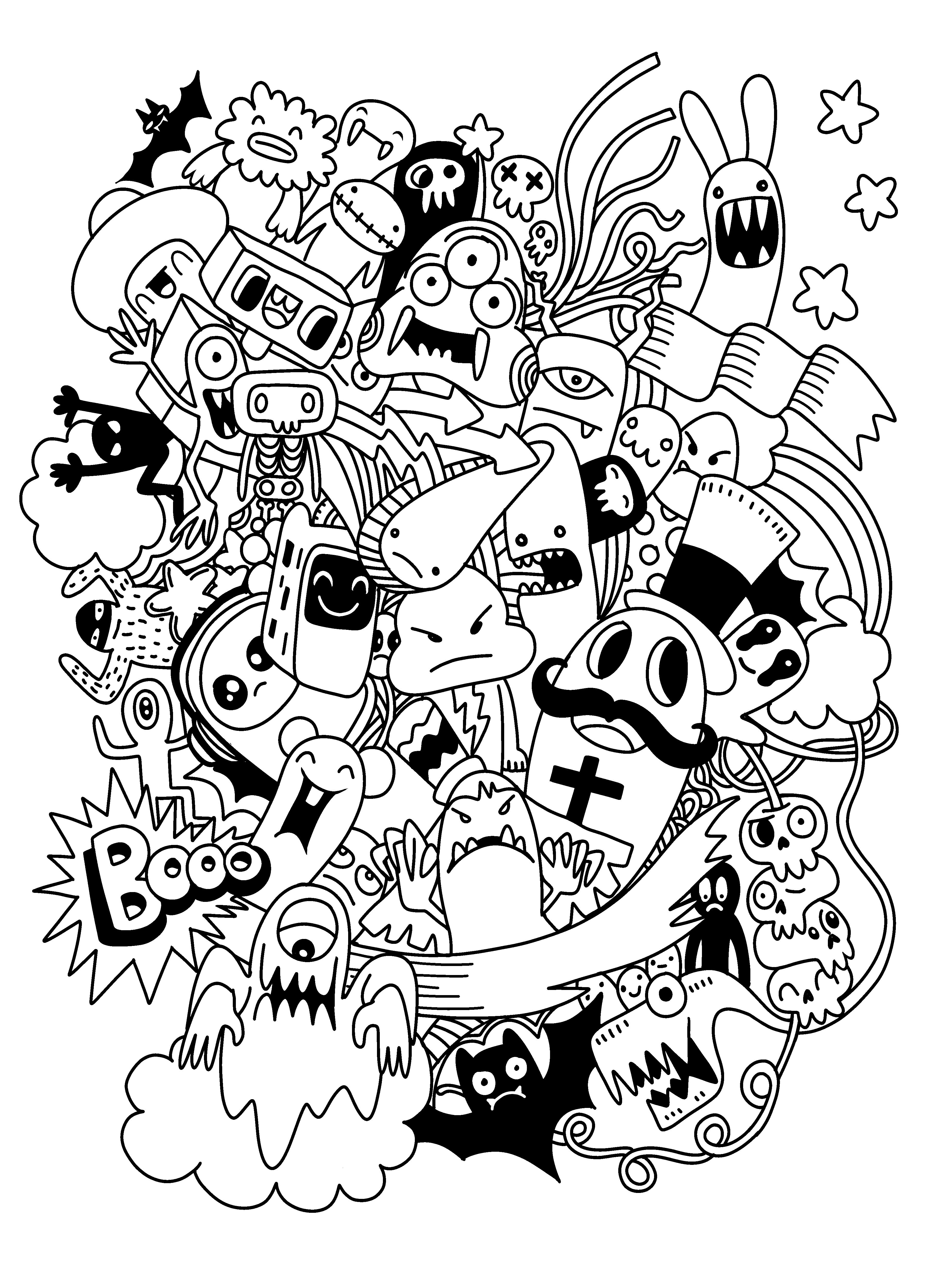
One of the earliest and most important examples of comics journalism was printed by Arco Publishing Company. The publisher, based in New York, produced a full-page depiction of a concentration camp entitled "Nazi Death Parade" in 1944:
August Maria Froehlich / Arco Publishing Company
A historian at Erasmus University Rotterdam, Kees Ribbens, told Smithsonian Magazine that the comic’s creator, August Maria Froehlich, was trying to reach non-Jewish American readers who weren’t engaging with the devastation of the Holocaust.
“On the one hand, it was too terrifying to realize what was actually going on there. On the other hand, people thought, ‘This can’t be true—it’s simply unbelievable,” Ribbens says.
“[They] realized, if their message comes only in words, it’s not going to make any difference, because if people at the time really wanted to know, they could.” Ribbens says although it wasn’t the first time a gas chamber had been reported on or talked about in wider media, a comic illustrated the atrocities of the Nazi regime in its rawest form.
This was a pivotal moment for journalists and news organisations: could they use comics to reach disengaged readers?
In 1972, The Smurfs released “Schtroumpf Vert et Vert Schtroumpf”, which literally translates to Smurf vs Smurf. It talks about the language barriers between Southern and Northern “smurfs”, but depicted a real-life division in Belgium between the French-speaking Wallonia to the South, and the Dutch-speaking Flanders in the North.
Although the Smurfs aren't exactly known for biting political satire, this tongue-in-cheek comic strip reflection how comics journalism helped to blur between humour and serious discourse.
Other well known non-fiction comics include Joe Sacco’s Palestine and, — perhaps most famously — Art Spiegelman’s Pulitzer Prize-winning Maus. Modern comics journalists include Dan Archer, Josh Neufeld’s work on New Orleans, Sarah Glidden, Matt Bors, Andy Warner, Susie Cagle, and Patrick Chappatte’s work with the New York Times.
Beyond the confronting nature of some of the topics of comics journalism, there can also be challenges in the realm of production.
For issue #1011 of the magazine Charlie Hebdo, the publishers had a mission to provide a different angle on the news, beyond what traditional outlets were reporting. But it was also met with backlash, and the magazine’s office was attacked by arsonists. Finally, just over two months after the issue was published, two terrorists stormed the magazine’s headquarters and killed 12 people.
Like any other type of journalism, comics journalism can be risky and controversial.
However, it can also have some serious benefits for publishers — so, let’s take a look at them.

The benefits of comics journalism,
and its role in current affairs
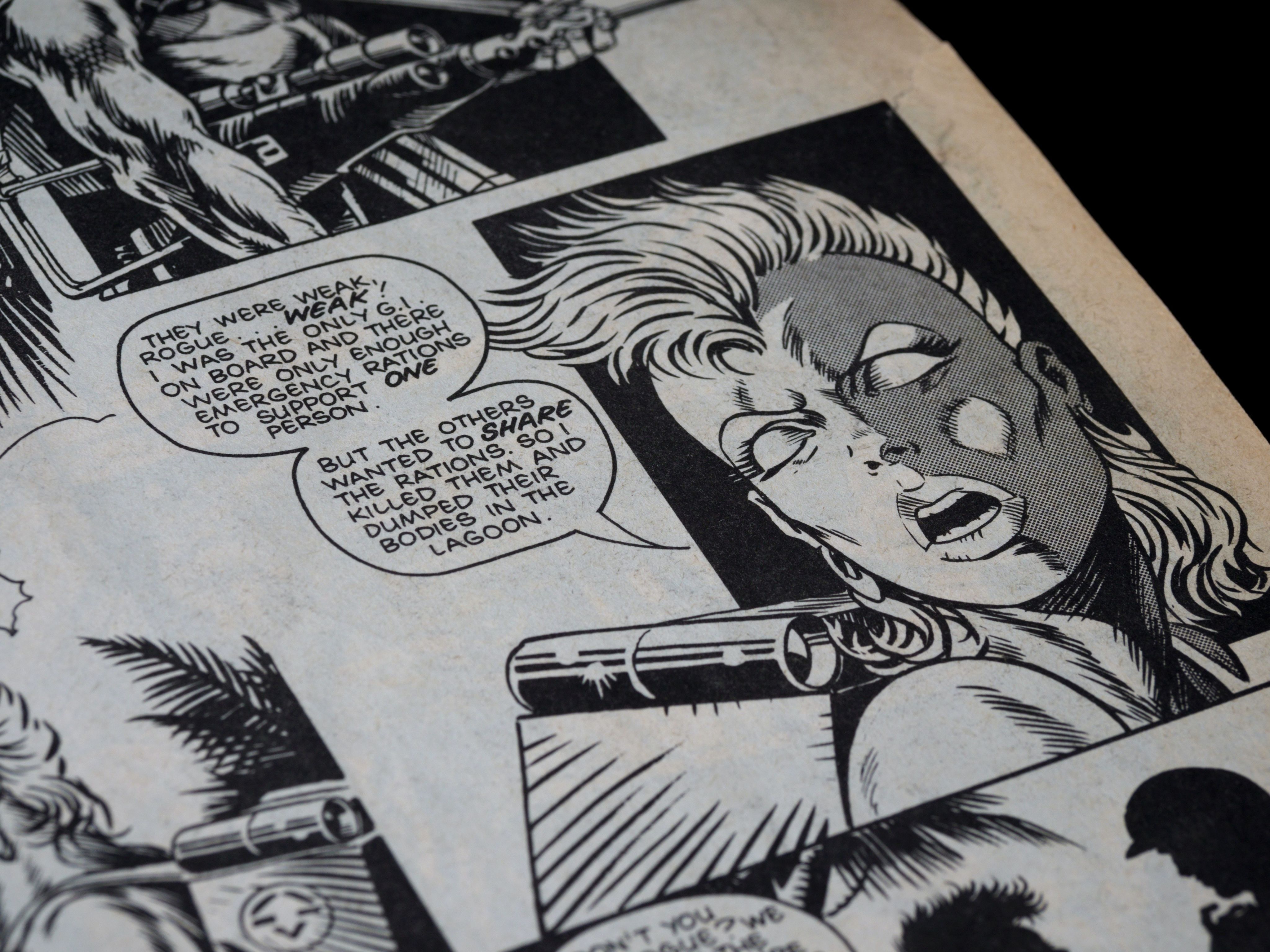
Comics journalism can play a crucial role in how a media outlet connects with its audience.
The combination of illustration and text can give a visual representation of a story, making it accessible to a wider audience. This comes with great benefits for outlets that want to expand their reach and tell complex stories with meaning.
Benefit 1: Visual storytelling
Although comic journalism isn't the most widely-used way media outlets tell stories with visuals, it can be one of the most thought-provoking.
Joe Sacco is one of the world's most prominent comics journalists. He has used comics to report on subjects like war crimes and corruption, winning awards for his reporting on the Middle East, including Palestine and Gaza in this Footnotes in Gaza.
One of his most thought-provoking pieces was published in The Guardian in 2005. The two-page spread came from Sacco's experiences in Iraq:
guardian.co.uk
Political cartoonist Khalid Albaih followed in Sacco’s footsteps a few years later when reporting on the Arab Spring. His cartoons went viral, with some even appearing on walls from Cairo to Beirut.
Albaih considers himself an avid news consumer, so the lack of reporting on the events after the Arab Spring made him search for the reasons.
Does that mean that the violence has stopped? Or is it not enough violence to make it onto the news? Did citizen journalists stop filming? Or is it just that the Western audience is no longer interested in Syria, that it has exceeded the world’s attention span?,” he mused in AlJazeera.
This takes me to Sudan where, in 2011, riding the wave of the Arab Spring, people took to the streets to protest for the first time, and where two years later in 2013 more than 200 people were shot dead by the Janjaweed, an armed militia group whose leader Mohammed Hamdan Dagalo, commonly known as Hemeti, is now ironically the deputy leader of Sudan’s transitional government.
Most of the world did not hear about these killings in Sudan because it was not televised. When citizen journalists tried to contact the international media, their replies were mostly that there was not enough TV-worthy footage coming out of Sudan to warrant a report. No videos meant no news – the opposite of what was going on in Syria at the time.
Albaih's subsequent comics helped to keep the spotlight on regions like Sudan post-Arab Spring to ensure citizens remained informed.
Benefit 2: Engage and reach a wider audience
Comics journalism can amplify marginalised voices and highlight unusual or underrepresented viewpoints.
In a way, comics journalism can act as an opinions column in a newspaper, offering unique perspectives or opinions different to mainstream thinking, to promote discussion and debate. Here’s a great example from Marjane Satrapi's Persepolis:
The comics tell the story of Satrapi's childhood during the Iranian Revolution and Iran-Iraq War. It offers a first-hand perspective on the emotional and psychological effects the war had on the author and her family, along with compelling insights into the unravelling of women’s rights.
By expressing complex issues like religion and women’s rights in a visual, first-person cartoon, Satrapi makes these issues — which are rarely told from her perspective — more accessible to a wider audience.
All in all, comics journalism seems like a great way for media outlets to connect with readers. So, what’s stopping them?

The top challenges faced
by comics journalists

Let’s talk about the elephant in the room.
Most of us associate comics with, well… comics. We think of Peanuts or Garfield on page 20 of our daily newspaper. And that association stretches into the journalism industry, where there is limited recognition of comics journalism as a genuine form of reporting. Mainly, this is because there's still a balancing act between artistic expression with factual accuracy.
News comics also lack the support given to traditional reporters, leading to an uphill battle to get featured in mainstream publications. This forces them to turn elsewhere: some comics we've already mentioned have pivoted to social media or self-publishing to get their stories out there.
The other big hurdle comics journalists face is a lack of financial resources and opportunities. As the genre is so niche, there are limited opportunities for comics journalists to make a living through their work. Some comics journalists have even turned to crowdfunding platforms to support their work and get published.
The good news is that, thanks to the rise of online storytelling platforms, the financial barriers are slowly disappearing.

The future of comics journalism
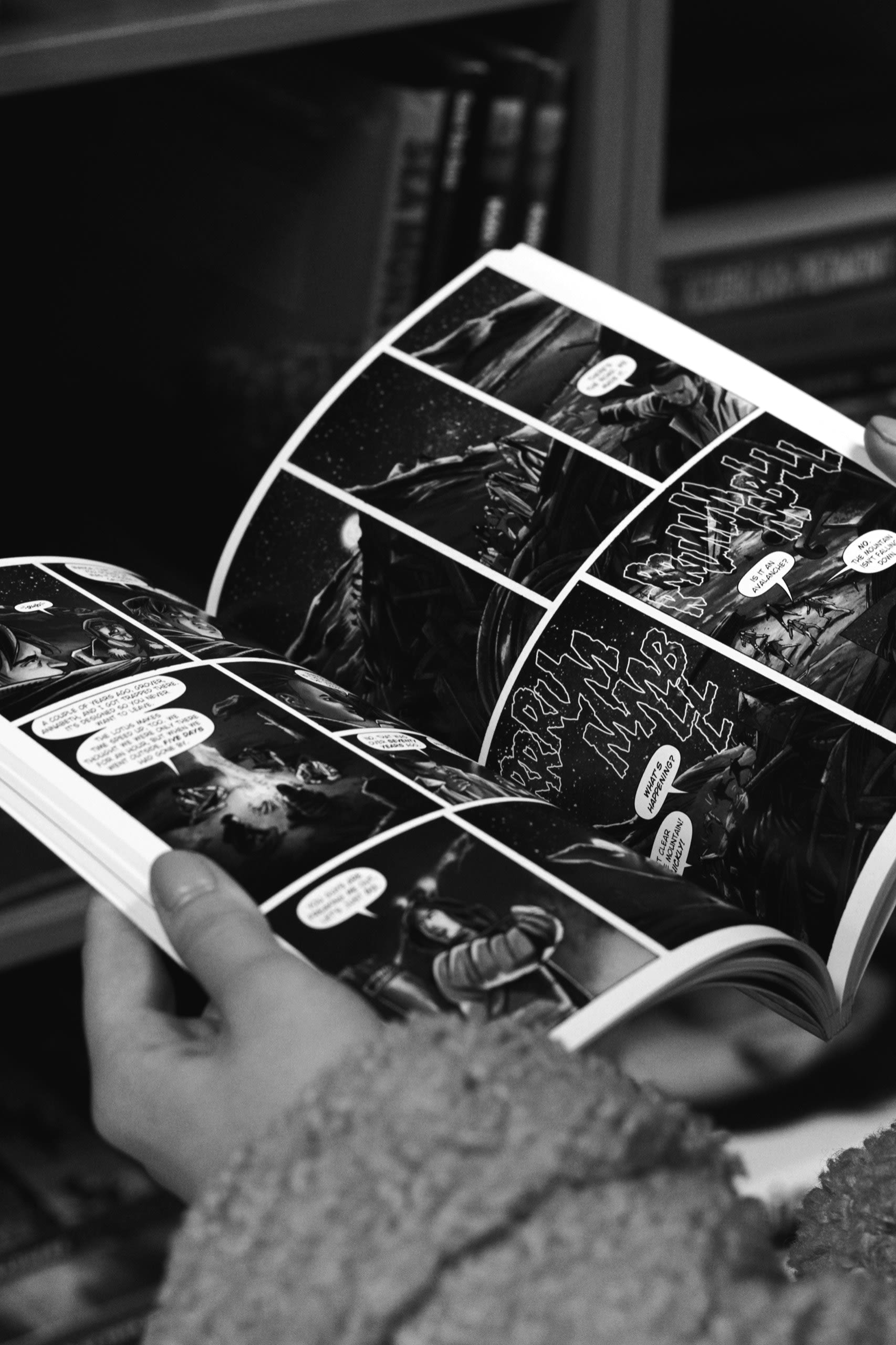
The public’s appetite for media is changing.
A study by the Technical University of Denmark found the global attention span is narrowing, and it's all down to the amount of information we are consuming. Media platforms have responded by shortening publications and pivoting to mediums like video and visual storytelling.
There wasn’t much choice.
A recent Reuters Institute Digital Report found 54% of under-35s in the United States head straight to social media to get their information instead of a news app. And Pew Research Center found the share of Americans who often get news from TV has dropped across all age groups since early 2016.
The shift to adjust to shorter attention spans has been swift. Instagram binned IGTV from its platform and replaced it with shorter reels. Outlets like NBC News and the Washington Post are using TikTok to publish snapshots of longer news stories.
But what does this shift in media appetite mean for comics journalism?
Well, it does tick all the boxes, with its ability to reach diverse audiences (especially younger consumers) and cover a wide range of topics in a single comic strip. Plus, there’s a huge opportunity for comics journalists to cross-promote material to gain traction online.
For example, comics journalists have begun to use social media channels as distribution tools. And it's easy to see why — comic strips are visually appealing and easy to digest. There have been some challenges (like Facebook censoring satirical material), but the changing media landscape is resulting in comics journalism becoming more recognised and accepted as a valid form of journalism.
This political satire comic by The Nib was censored by Facebook during the coronavirus pandemic. Image source.
Damjan Tanaskovic was an editor at Strip Vesti, a site that publishes news comics. He says comics journalism doesn't happen overnight — it takes time and creativity to craft properly.
The format's simplicity and accessibility could make it a cornerstone of contemporary journalism if there wasn't such an insatiable hunger for quantity rather than quality. In that time, the media outlet will have hoped to publish at least a dozen news pieces, so the journalists are already feeling enough pressure as it is.
But Tanaskovic says comics journalism is incredibly easy for audiences to digest compared to other types of journalism.
In today's day and age, few people find the time to read anything, so if they are to read something, it better be bite-sized and to the point. That's where comics journalism steps in and saves the day. When done right, it conveys the essence of the news piece in one compact graphic.

Is comics journalism right
for your media outlet?

Comics journalism is a criminally underused way to engage and connect with readers online.
The hardest part is getting started. In the past, comics journalism was an afterthought for editors, as it was time-consuming and expensive to produce. But now, the public's appetite for how they consume news has changed, and suddenly a single-page comic strip that relies on a mix of visuals and text may just be a way to engage them.
If you're thinking about exploring the use of comics journalism but aren’t sure where to start, Shorthand is the perfect place to publish modern comics with a twist. Mixing visuals and text with scrollytelling technology, Shorthand gives readers a truly immersive experience when they read a comic.






